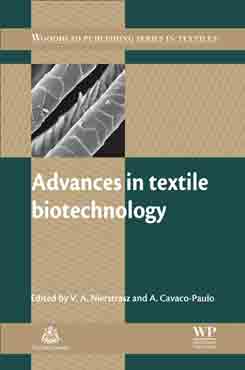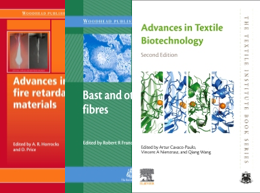Description
Fabric Structures in Architecture covers the varying ways textiles and their properties are used in building construction, with particular focus given to tensile structures. The text begins with the fundamental principles of textiles, including the origins of fabric architecture, then progressing to a discussion of the modern textiles of today. It covers relevant textile materials and their properties, including coatings and membranes.
In addition, a range of design considerations are discussed, with detailed information on installation and failure modes. A series of case studies from around the world accompany the discussion, illustrating the applications of textiles in architecture.
Key Features
- Offers key coverage of the fundamental principles, from the origins of fabric architecture to modern textile
- Provides analysis of relevant textile materials and their properties, including coatings and membranes
- Contains expert insights in to the applications of textiles in architecture, presenting a series of relevant case-studies from around the world
Readership
Textile manufacturers, architects, engineers, and postgraduate students and academic researchers in textile science
Table of Contents
-
- Preface
- 1. Introduction: the development of fabric structures in architecture
- 1.1. The characteristics of fabric structures as used in architecture
- 1.2. Prehistoric and traditional fabric structures
- 1.3. Historic development of fabric structures
- 1.4. Twentieth-century event architecture; new techniques and materials
- 1.5. Expeditionary and military mobile structures
- 1.6. Fabric structure engineering for permanently sited architecture
- 1.7. Future trends and conclusion
- 1.8. Sources of further information
- Part One. Fundamental principles and materials
- 2. Fundamentals of tensile architectural fabric structures
- 2.1. Introduction
- 2.2. The hung roofs
- 2.3. Cable-stayed structures
- 2.4. Longitudinally pre-stressed structures
- 2.5. Cable grids
- 2.6. Internally tensed structures
- 2.7. Pre-stressed membranes
- 2.8. Pneumatic structures
- 3. Materials used for architectural fabric structures
- 3.1. A distinguishing building concept
- 3.2. The fabric material
- 3.3. Foils
- 3.4. Low-E coatings
- 4. Structural behaviour of fabrics and coatings for architectural fabric structures
- 4.1. Polymeric materials
- 4.2. Fabrics and coatings
- 4.3. Mechanical properties and material laws for coated fabrics
- 5. Functional-layered textiles in architecture
- 5.1. Introduction
- 5.2. Motivation and performance-driven design
- 5.3. Applications
- 5.4. Conclusion and outlook
- 6. High-performance architectural membranes: phase-change materials
- 6.1. Introduction
- 6.2. Membrane materials with phase-change material (PCM) treatment
- 6.3. Role of PCMs in architectural membranes
- 6.4. Possible applications of architectural membranes with PCM treatment
- 6.5. Conclusions
- 2. Fundamentals of tensile architectural fabric structures
- Part Two. Design, installation and maintenance
- 7. Lighting and the visual environment in architectural fabric structures
- 7.1. Introduction
- 7.2. Visual perception in tensile fabric structures
- 7.3. Design of the luminous environment and its effect on visual information
- 7.4. Lighting quality and the associated spatial enclosure character
- 7.5. Light variation and brightness contrast
- 7.6. Material properties and light transmission
- 7.7. Issues in daytime lighting of fabric structures
- 7.8. Artificial lighting of fabric structures
- 7.9. Fabric membranes for shading and solar control
- 7.10. Case studies
- 7.11. Sources of further information and advice
- 8. Thermal behaviour in architectural fabric structures
- 8.1. Introduction
- 8.2. Thermal design
- 8.3. The thermal behaviour of architectural fabrics
- 8.4. The thermal properties of architectural fabrics
- 8.5. Modelling the thermal behaviour of architectural fabrics
- 8.6. The thermal behaviour of spaces enclosed by architectural fabrics
- 8.7. The use of computational fluid dynamics
- 8.8. Examples of modelled behaviour
- 8.9. The future thermal behaviour of architectural fabric structures
- 8.10. Conclusion
- 8.11. Useful sources of information
- 9. Acoustics in architectural fabric structures: the case of ETFE pillows
- 9.1. Introduction
- 9.2. Principles of sound
- 9.3. Case study: National Aquatic Center Beijing—the Water Cube
- 9.4. Conclusions
- 10. Environmental impact of architectural fabric structures
- 10.1. Introduction: key environmental issues affecting architectural fabric structures and the global picture
- 10.2. Traditional reasoning why membrane structures are beneficial to the environment
- 10.3. Life cycle assessment (LCA)
- 10.4. Environmental product declarations (EPD)
- 10.5. Benefit to the membrane sector
- 10.6. Additional background information
- 10.7. Sustainable building and building rating schemes (assessment systems)
- 10.8. Current status on LCA on membrane materials and structures
- 10.9. Conclusions
- 10.10. Sources of further information and advice
- 11. Detailing for fabric architectural structures
- 11.1. Introduction
- 11.2. Principles and requirements
- 11.3. Typology of details
- 11.4. Future trends
- 11.5. Case studies
- 11.6. Sources of further information and advice
- 12. Installation of architectural fabric structures
- 12.1. Introduction
- 12.2. Main characteristics of the installation process
- 12.3. Planning and installation concepts
- 12.4. Installation process and realization
- 12.5. Scheduling and control
- 12.6. Examples based on realized projects
- 12.7. Outlook and future trends
- 12.8. Conclusion
- 13. Understanding and overcoming failures associated with architectural fabric structures
- 13.1. Introduction
- 13.2. Most common pathological processes and preventive measures
- 13.3. Basic maintenance tasks
- 13.4. Conclusions
- 7. Lighting and the visual environment in architectural fabric structures
- Part Three. Applications, case studies, recent developments
- 14. Membrane claddings in architecture
- 14.1. Introduction: membrane as material for building façade
- 14.2. Materials and their requirements
- 14.3. Structural supports of the textile cladding layer
- 14.4. Applications
- 14.5. Future trends
- 14.6. Conclusion
- 15. Architectural fabric structures in the refurbishment of archaeological and cultural heritage areas
- 15.1. Introduction
- 15.2. Technical textiles for the built environment
- 15.3. Architectural fabric for archaeology sites
- 15.4. Architectural fabric for cultural heritage buildings
- 15.5. Conclusion
- 16. Recent developments in architectural fabric structures in China
- 16.1. Introduction: the increasing role of architectural fabric structures in China
- 16.2. The range of architectural fabric structures in China
- 16.3. Examples
- 16.4. Future trends
- 16.5. Conclusion
- 16.6. Sources of further information and advice
- 17. Recent developments in architectural fabric structures in Latin America
- 17.1. Introduction
- 17.2. Argentina
- 17.3. Brazil
- 17.4. Central America
- 17.5. Chile
- 17.6. Colombia
- 17.7. Cuba
- 17.8. Mexico
- 17.9. Peru
- 17.10. Uruguay
- 17.11. Venezuela
- 17.12. Future
- 17.13. Sources of further information
- 18. Recent developments in architectural fabric structures in North America
- 18.1. Introduction
- 18.2. Fabric structure technology
- 18.3. Fabric structure performance
- 18.4. Fabric structure resources
- 19. Recent developments in architectural fabric structures in Japan
- 19.1. Introduction
- 19.2. Recent trends in and roles of architectural membrane structures in Japan
- 19.3. Examples
- 19.4. Future trends
- 19.5. Conclusion
- 20. Recent developments in architectural fabric structures: shopping mall Titan Plaza, Bogotá, Columbia
- 20.1. Introduction
- 20.2. Case study: shopping mall Titan Plaza, Bogotá
- 20.3. Future trends
- 20.4. Conclusion
- 20.5. Further information
- 21. Recent developments in architectural fabric structures in Europe: the example of Winter Garden, Verona, Italy
- 21.1. Introduction
- 21.2. State of the art
- 21.3. Winter Garden project, Verona, Italy
- 21.4. Installation
- 21.5. Future trends and conclusions
- 22. Recent developments in architectural fabric structures in Europe: the design and construction of the London 2012 Olympic Stadium and its context in the European fabric structures market
- 22.1. Introduction and context
- 22.2. London 2012 Olympic Stadium
- 22.3. Recent developments and future trends
- 22.4. Sources of further information and advice
- 14. Membrane claddings in architecture
- Epilogue
- Index












